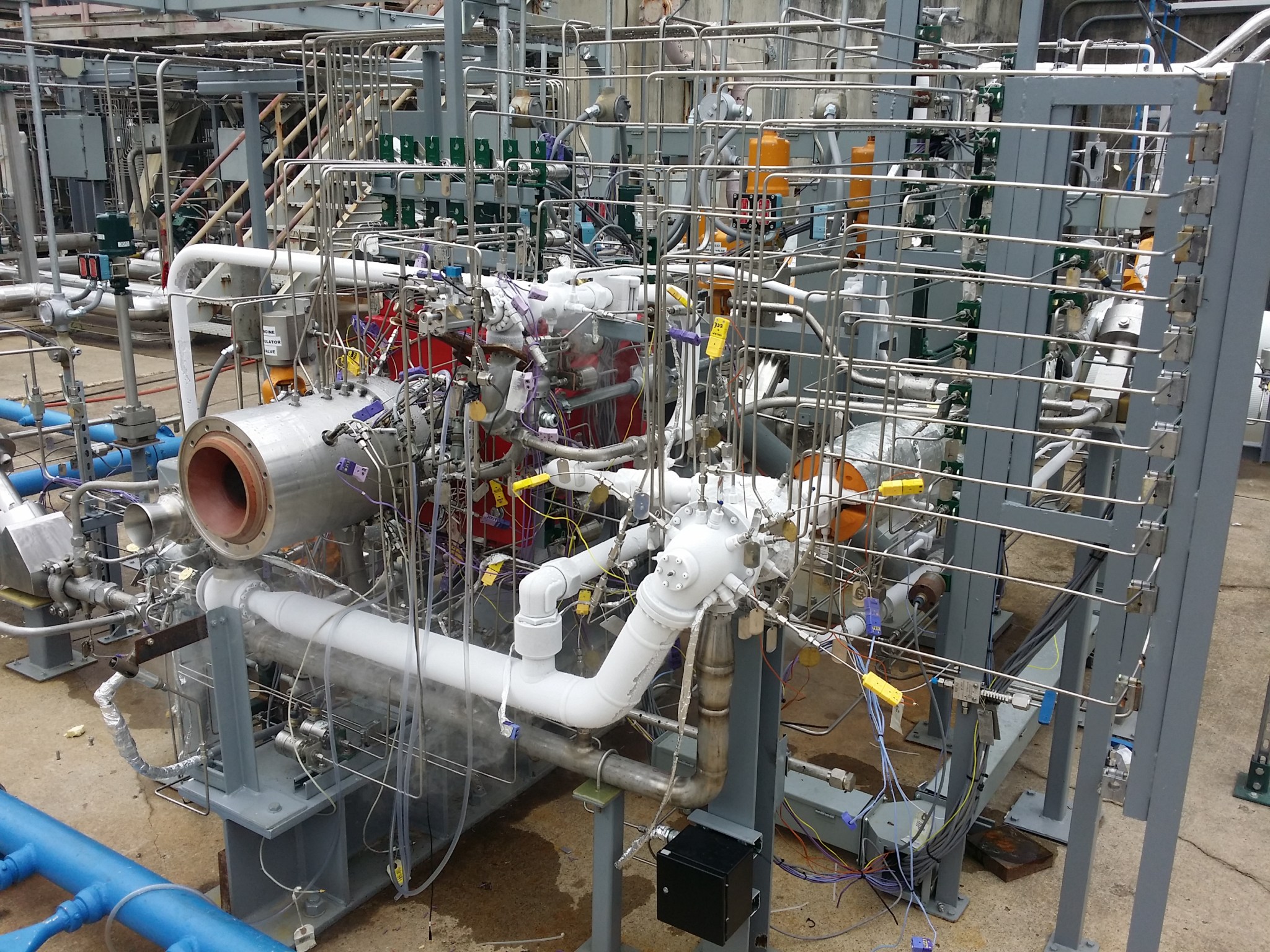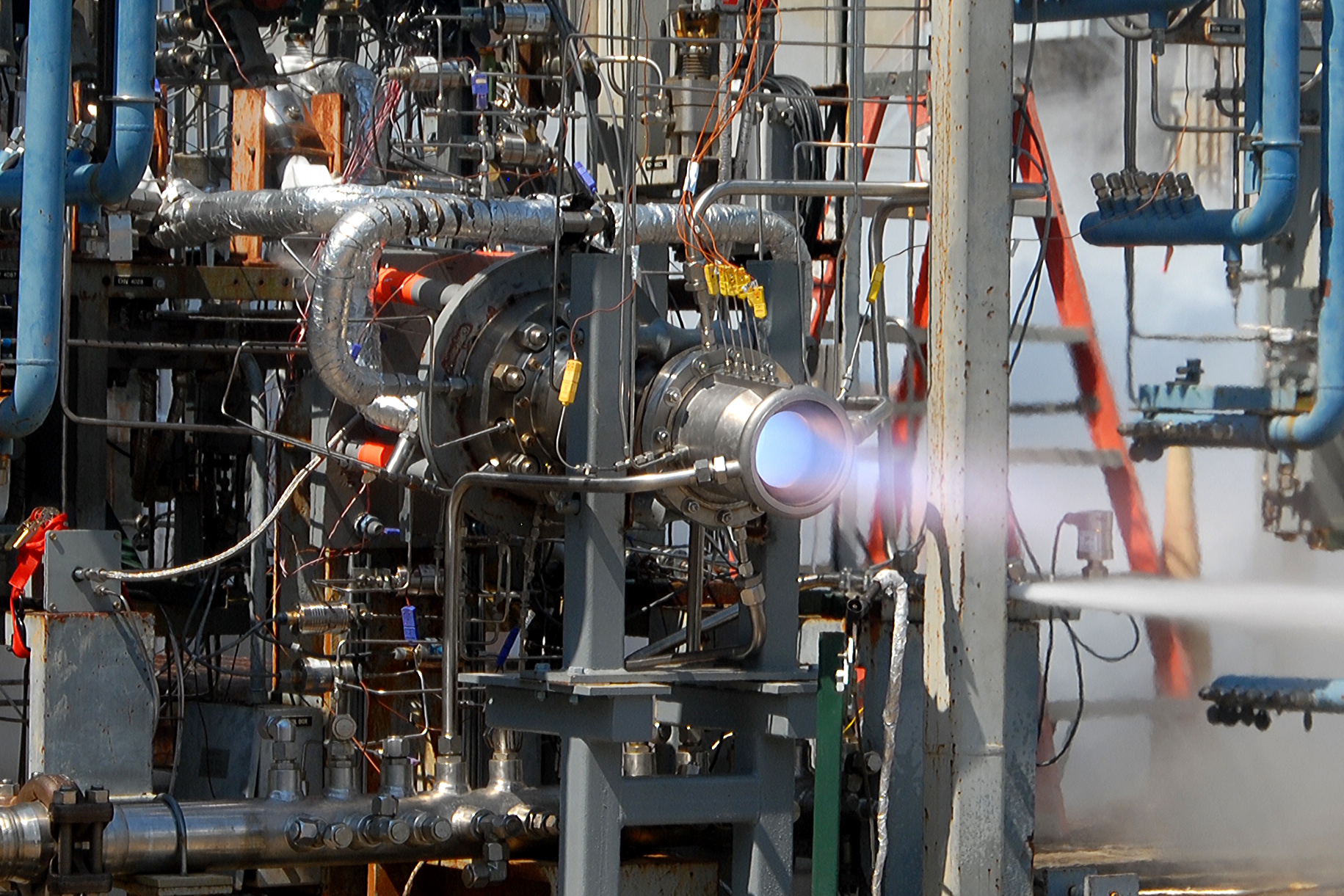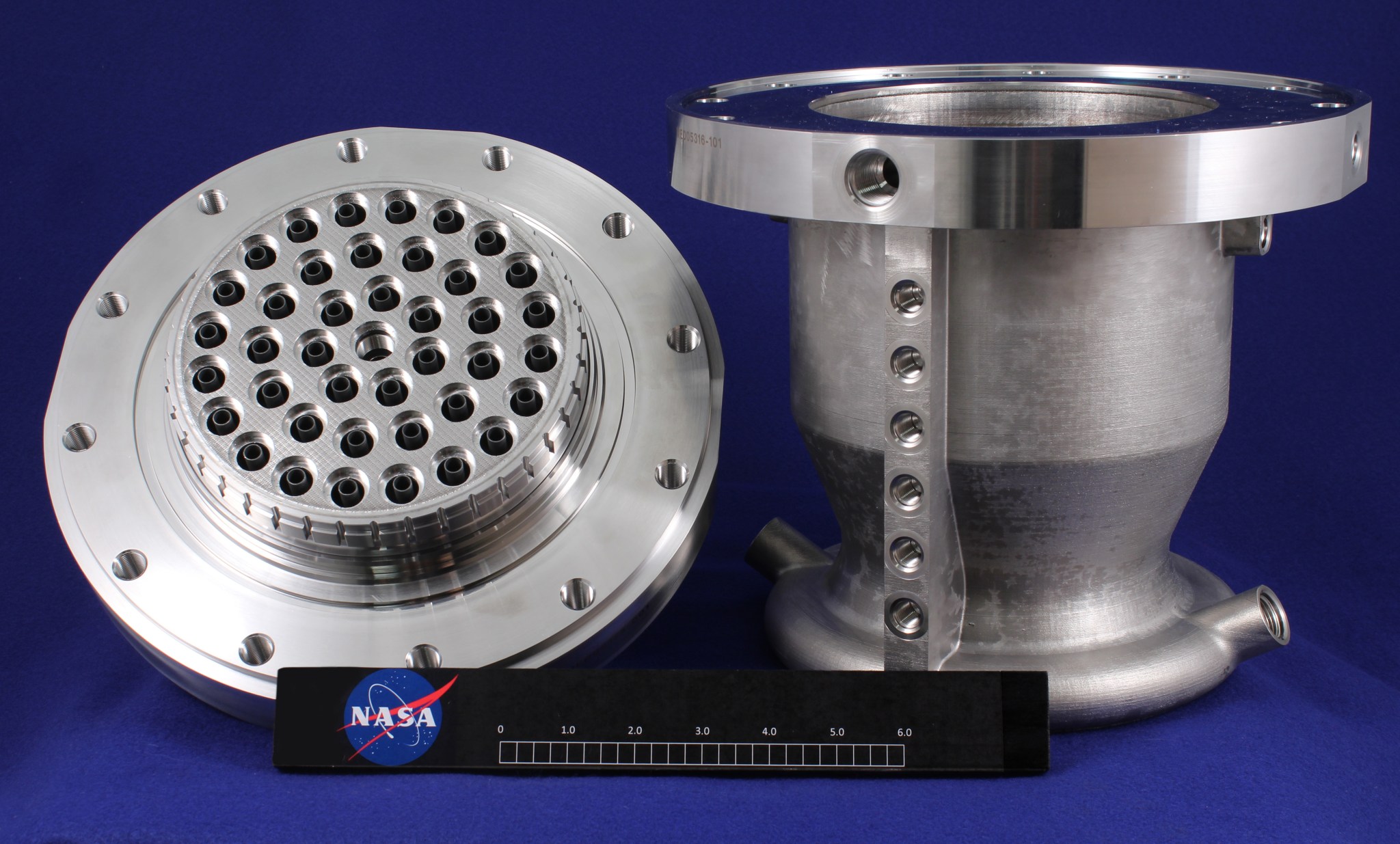NASA tested components for an engine that could be used for Mars landers powered with methane, a fuel that has never before propelled a NASA spacecraft.
A spectacular blue flame erupted as a rocket engine thruster roared to life in a series of tests recently at NASA’s Marshall Space Flight Center in Huntsville, Alabama. The blue flame, not typical of most engine tests, was the signature of the thruster’s fuel — methane.
“With the current configuration, these methane thrusters could propel a small lander,” said Steve Hanna, lead for NASA’s Advanced Exploration Systems at Marshall. “With the data gained from these tests, the technology is scalable for even larger applications for in-space engines and larger landers.”
Methane is a promising fuel for the journey to Mars. Methane — more stable than liquid hydrogen, today’s most common rocket fuel — can also be stored at more manageable temperatures. Methane may be recovered or created from local resources, using in-situ resource utilization (ISRU).
With a storage temperature similar to that of liquid oxygen — the oxidizer for methane-powered engines — methane’s storage tanks will require less insulation, leading to more affordable tanks. Methane is also denser than liquid hydrogen, which allows for smaller tanks.
With the Mars 2020 mission, NASA plans to demonstrate ISRU technologies that could enable propellant and consumable oxygen production from the Martian atmosphere. If successful, astronauts could create both the fuel and oxidizer needed to propel an ascent vehicle to Martian orbit.
The current thruster being tested, which is part of a pressure-fed design, produces 4,000 pounds of thrust. To achieve the 25,000 pounds of thrust needed for larger descent/ascent landers on Mars, and enable engines to be throttled as needed, Marshall engineers are also developing a pump-fed engine design. In the design, a turbopump will use a turbine capable of up to 95,000 revolutions per minute to deliver methane to the thruster, allowing for higher thrust levels.
Marshall engineers recently successfully conducted preliminary testing and facility checkout of a turbopump for a methane engine. Engineers plan to perform a series of tests later this year to verify the turbopump, previously tested with liquid hydrogen, can be used with either fuel, and is capable of delivering enough fuel to power a large methane engine.

Thrusters — the combination of an injector and chamber, known as thruster assemblies in larger engines — fueled by methane with a liquid oxygen oxidizer, have been under development at Marshall for the last decade. Both the thruster and the turbopump were manufactured with additive manufacturing, or 3-D printing.
Not only does 3-D printing allow for quicker production times and a reduction in the machining and brazing required with traditional fabrication processes, it also allows for the addition of thermocouple ports along the length of the chamber. These ports communicate with the chamber’s coolant channels, providing discrete temperature data never before available.
“This data will help critical thermal modeling,” said Sandra Greene, an engineer in Marshall’s Propulsion Systems Department. “That’s why the thermocouple ports are so exciting — we not only get the inlet and exit temperature of the methane, but we also get data to help us verify what is happening inside the chamber’s coolant system.”
This unique thermal data will be used to anchor thermal models to optimize the design of the thruster for a full regenerative engine system that uses methane as fuel.
A regenerative engine system cycles fuel through channels within the chamber to cool the chamber before and during ignition. In previous methane thruster development efforts at Marshall, chamber designs were primarily uncooled — using ablative or high-temperature refractory materials to prevent the chamber from overheating.
“To maximize performance, a regeneratively cooled chamber is desired,” said Greene. “This chamber is Marshall’s first attempt at such a design in a methane-powered system.”
With NASA closer to sending astronauts to Mars than ever before, these tests and the technology they inspire could enable the first steps on the Martian surface to come from astronauts exiting a lander driven by a spectacular blue methane flame.
To view video of the methane-powered thruster test, click here.




























